Personality and Sound: John S. Koss - The Pioneer of Portable Audio
Today it is difficult for us to imagine that headphones, as a gadget for everyday household use, were once considered a daring innovation. Meanwhile, the introduction of this device into the mass market required the efforts of more than one person. People like Ezra Gilliland, Nathaniel Baldwin, Ernest Mercadier, Thomas Edison, Eugen Beyer, Amar Bowes, Fritz Zenheiser and others have contributed to this concept, the list goes on and on. At the same time, John Koss’s contribution to the introduction of headphones in the consumer market is perhaps one of the most significant.
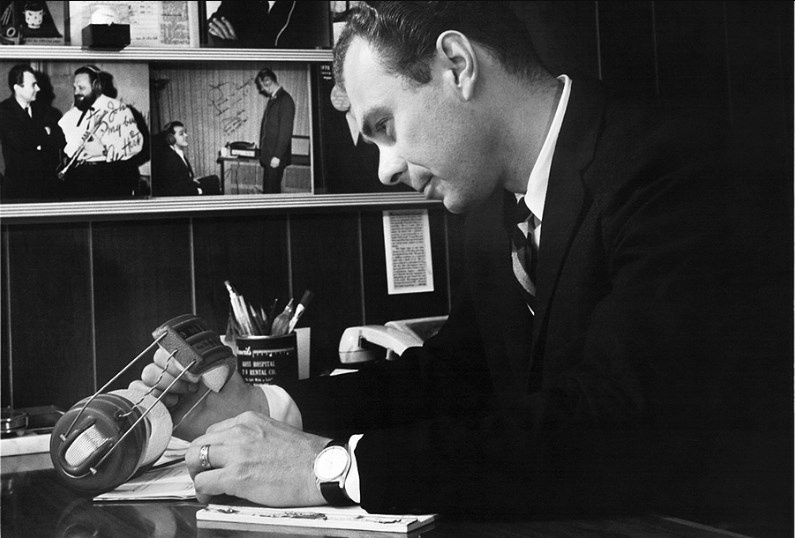
The main production principle of Koss is the creation of headphones at an affordable price with the highest possible quality. This concept has not changed since the day Koss debuted in the consumer electronics market. Over the past 50 years, Koss has been known to the world as a pioneer in creating massive portable audio, as well as one of the leading innovators and major players in the headphone market.
Relatively little is known about the childhood and youth of young John Koss. Unlike his Japanese and German colleagues, after gaining worldwide fame, he did not turn his personal life into a legend. Moreover, the businessman and innovator preferred not to give publicity to anything that was not directly related to his professional activity.
John Koss was born in Milwaukee, Wisconsin, in 1930. About the financial position of his family almost nothing is known. Most biographers agree that the Koss family belonged to the middle class, and, probably, the childhood of a businessman was rather difficult, as it was necessary during the great depression and its consequences. Neither the company’s website nor the available biographical sources report anything about the parents of a businessman.
The history of Cossa began in 1952, at a significant day for him - at the wedding. As a wedding gift, Kossu and his wife were presented with an envelope, with a relatively large amount for that time - $ 200 (today, taking inflation into account, this would have been $ 1,850). Kossov’s newly baked couple planned to purchase a sofa with this money, but later the couple decided that it would be too wasteful to exchange the “American dream” for furniture and put money into the business.
So in 1953, a small company JC Koss Hospital Television Rental Company was opened for wedding money, renting television sets to patients in clinics in Milwaukee. This business can not be called super-profitable, but it has repeatedly paid for the investments and gave Koss the opportunity to create an impressive financial reserve.
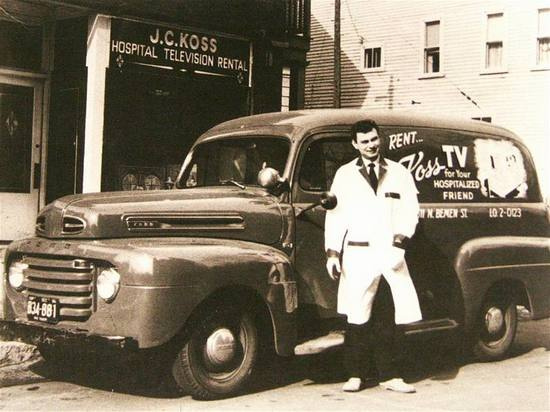
It can be noted that in the 50s his occupation was popular and almost win-win. Televisions were a comparative rarity, especially in small cities, and television broadcasting in the USA was regular. To get the opportunity to watch something in a box with a blue screen, instead of staying in a hospital bed, many people wanted. In the 1950s, several thousand such companies were opened in the United States, many of which existed until the early 1970s.
Perhaps, many initiatives in the field of audio electronics of the 40s - 60s can be called startups. Koss is no exception. Despite the fact that he already had a completely profitable business, he decides to risk the accumulated state. John was a man with nontrivial thinking, perhaps contemporaries considered him a dreamer. In the 50s, his ideas significantly outstripped the development of technology, and there was not enough knowledge and experience to create production. Everything changed in 1956, when Koss met a talented engineer Martin Lange.
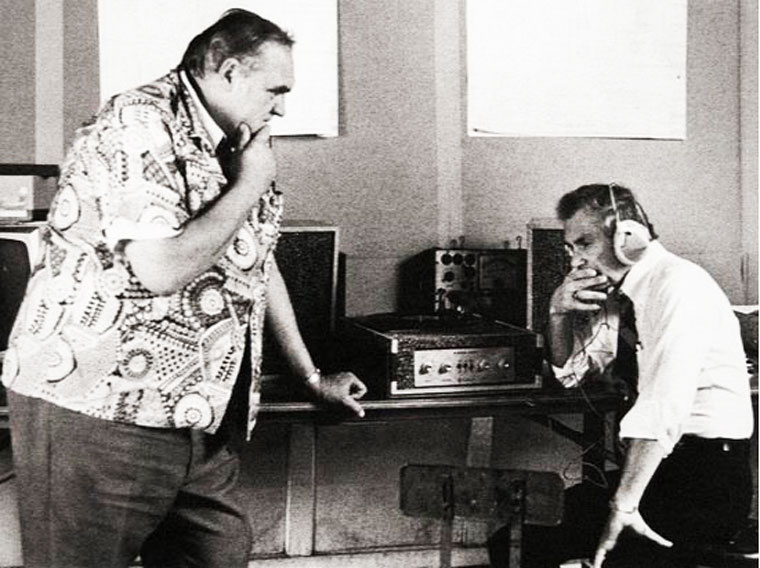
Like Akio Morita, Koss had a dream about a mobile, compact device for listening to music, which he shared with a new acquaintance. The partners took up the development of a portable record player and decided to equip it with stereo headphones. During the development period, for the financial support of the young company, Koss and Lange produced simple and highly demanded testers for the repair of television sets, which allowed them to keep afloat.
As a basis, the engineer and businessman chose aviation headphones, which were substantially modified. The main innovation was the separation of channels. Already by 1958, the product was completely ready for commercial launch. Koss presented a portable LP player the same year at a technical exhibition in Wisconsin.

Contrary to the expectations of the creators, visitors of the exhibition almost did not interest the player, but the headphones made a real sensation. The main value of the product for users was the ability to isolate from the sound of people around the listener. No less impressive was the impression of the stereo effect in the headphones, which was also at that time something completely new.
The device "took off", which, to the surprise of developers, has repeatedly increased the company's revenues. Since then, the headphones have become the main activity of Koss. The brand within 2 years has gained world fame. For several months, the partners have started mass production of headphones. The first mass model Koss became the SP-3.
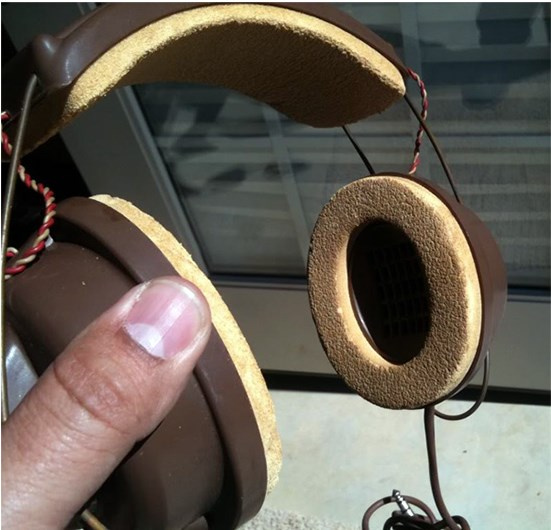
Later, with the light hand of The Billboard journalists, John Koss will be named the inventor of the stereo headset. The last statement is somewhat far from the truth, since at various times many professional stereo head phones appeared. For example, such as Eugen Bayer's headphones and Telefunken studio headphones (used in the 30s – 40s on German radio stations and recording studios). But it was Koss and Lange who made them a truly massive product.
By the mid-60s, lanky people with guitars began to conquer the tops of the music Olympus. At the forefront of this galaxy of insurgents of the first wave certainly went The Beatles. The album A hard day's night blew up the charts on both sides of the Atlantic. Beatlemania was probably the first global phenomenon of insanity in music.
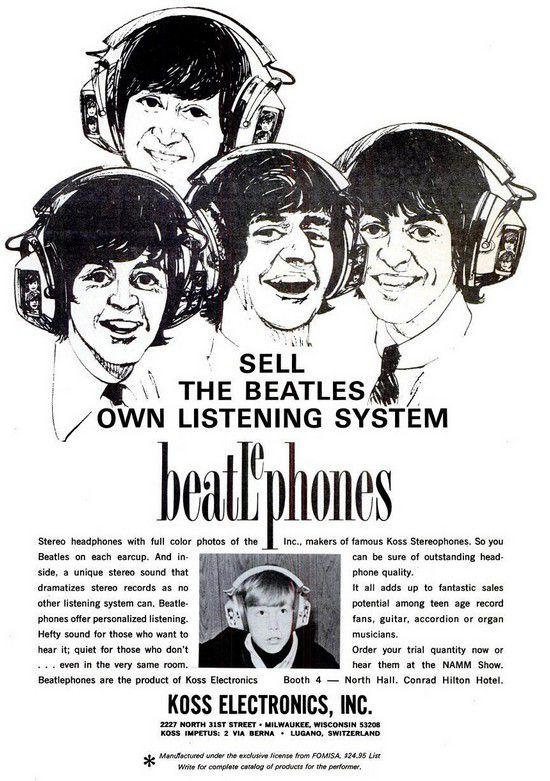
The main target audience of the Liverpool Four was youth. Koss and Lange rightly reasoned that their product and The Beatles had only Central Asia. A co-branding plan was developed, according to which Koss headphones and players are produced with the symbols of the Liverpool team. Thus, an analogy of the type should have arisen in the mind of the Beetleman: “Lenon and Koss are twin brothers, we listen to Koss - we mean - the Beatles! We listen to the Beatles - we mean - Koss! ”

So there were headphones, which are known to us as "Bitlofony." The basis for creating a fashionable gadget was the serial model K-6.

Technically, these headphones are no different from the classic production model. Moreover, the design has hardly changed. The only innovations were modified packs with the symbols of the group, a new color and stickers with a photo of the team on the device itself.
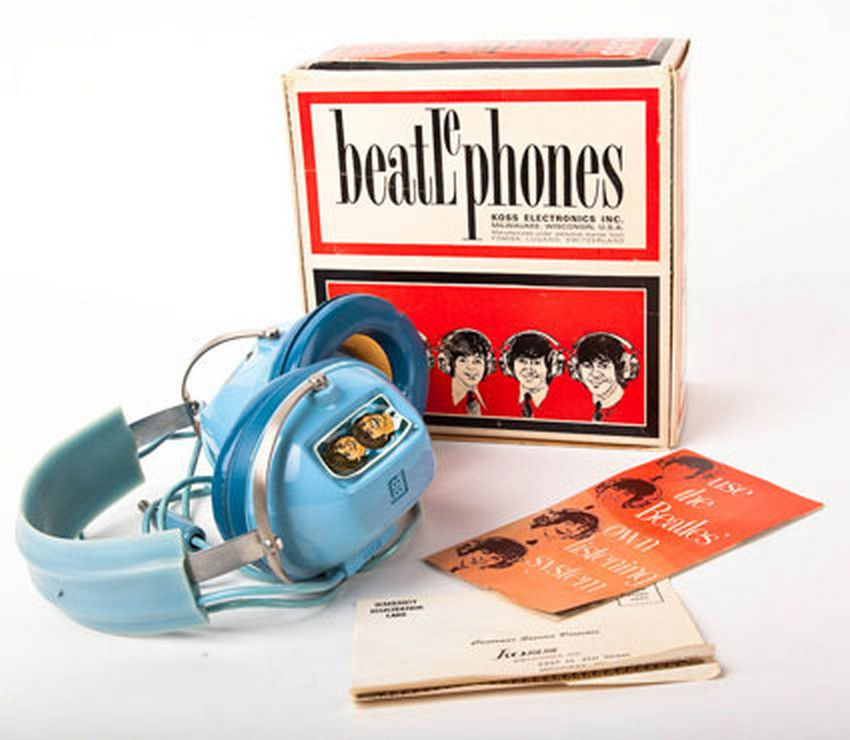
The smiles of Paul, John, Ringo and George really helped the realization. The sales of the already popular K-6 were comparable to the sales of the first edition of The Beatles album “Let it be”. In fact, this model paid for the creation of several production units in Europe.
By 1967, the company's annual turnover exceeded $ 2,000,000 (the current equivalent of 17 million). The company did not owe its success exclusively to the Beatlophones. Over the next year, Koss could triple the turnover, which even for a monopolist can be considered an economic miracle. At that moment, John Koss and Martin Eugen were people who, better than anyone, knew how to make good headphones and what the market really wants from such a device. In the 60s, his position was almost unshakable.
John Koss was well aware that the new niche, practically occupied by his company in the market, is far from everything that Eugen and his other engineers are capable of. He decided to make his way into the professional segment. This led to the appearance of the legendary Koss PRO4AA studio headphones. This model has been appreciated by professionals, and is produced to this day.
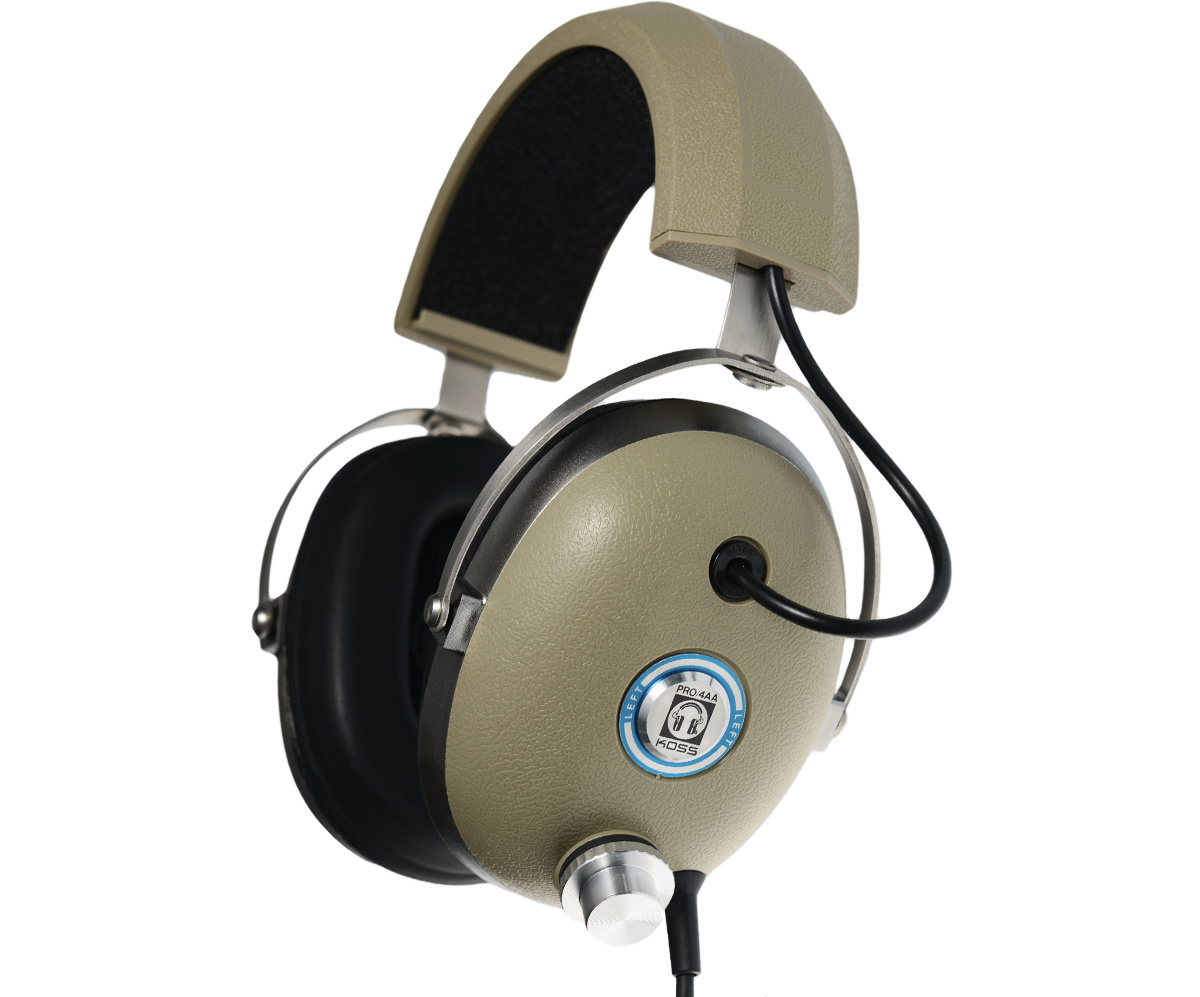
In the late 60s, the company blew up the nascent High End segment, launching the first American electrostatic headphones. Thus, Koss became the only competitor of the Japanese company Stax.

It was in the sixties that experimental headphones were created, which revived the forgotten intra channel acoustic design. Until Koss, this principle was used only in the 19th century by Ernest Mercadier, Thomas Edison. At that time, the market was not ready to accept development, and the “gags” that are well known to us took root only by the beginning of the 70s in the sphere of professional concert use. The concept will shoot only in the 90s.
The inertia of the financial and technological explosion of Koss in the 60s allowed the company to exist comfortably during the next decade and conduct a number of promising strategic developments. In connection with this order, John Coss, tired of the endless series of decision-making, in the late 1970s, decided to retire and rest on the laurels of the main popularizer of headphones.
Management was transferred to the “effective” manager, James Dodson, which almost destroyed the giant company and the former industry leader. To the credit of Dodson, it should be noted that the direction of research and development was chosen quite correctly. From the mid-70s, the development of a portable cassette player was launched at Koss. The idea also belonged to John Cossa, but he did not engage in its implementation.
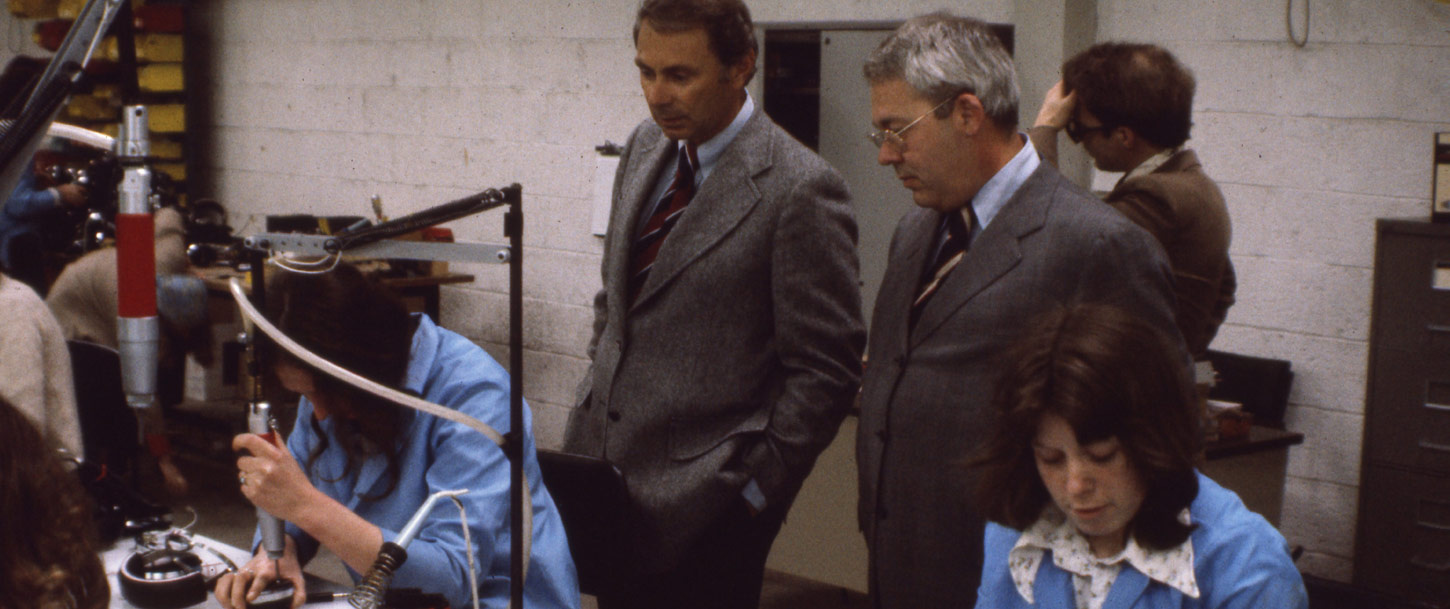
Despite the huge amount of funds that the company spent on the development of the device, Koss Box Music portable cassette player appeared only in 1982. Other things being equal with the Walkman that started three years earlier, the price of the device was higher than that of the SONY. The mass release of a model not interesting to the market has put the company on the verge of bankruptcy. On top of that, SONY used Sennheiser products, the main competitor of KOSS in the target headphone market, as Walkman headphones.

As often happens in a crisis, difficult period, the father of the founder, John Koss, returns to the leadership in order to save his brainchild. Failure with the "music box" cost much. Several enterprises in Europe were lost and, most importantly, the reputation of the indisputable monopolist in the industry, KOSS began to be forgotten. In addition, unlike Japanese colleagues, Koss did not shy away from downsizing. At the cost of impressive losses, John managed to keep the main production capacity. We needed an idea and a product that would allow us to regain lost positions in the market.
This idea was the KOSS Porta Pro . John Koss, Martin Eugen and a group of young designers managed to find a form factor that appealed to the market. They understood that the device that would save the company should differ significantly from everything that had been done before, while possessing qualities that the company’s products had valued in the past.
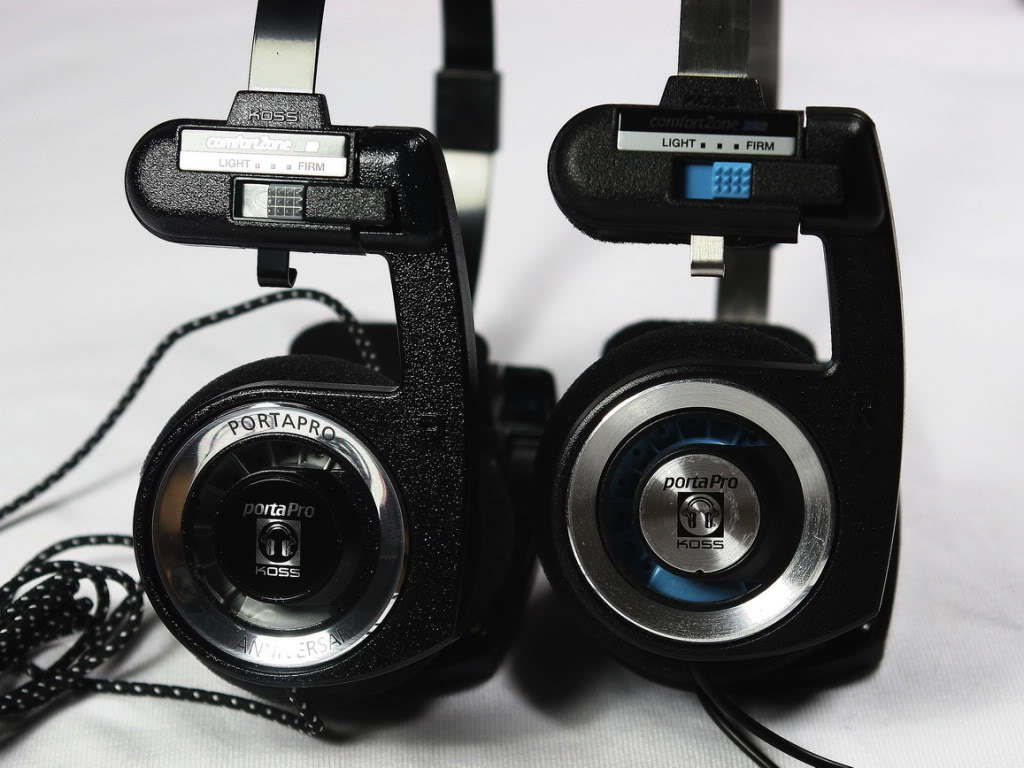
Koss made the difficult decision: to attack the market with a product that had nothing to do with what the company had done before. It was a serious risk, and he was justified. The headphones turned out to be unusual, hardly anything similar came out before and after the Porta Pro. Open type, surface acoustic design, low weight, high-quality sound and the price is lower than that of the vast majority of analogs.
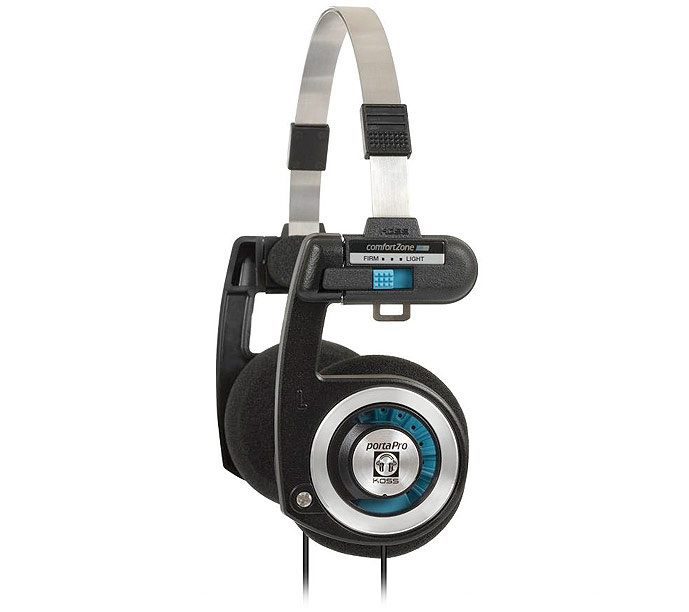
Wireless headphones were developed for a narrower segment, and the signal was transmitted via infrared. The range was limited to the line of sight, but for the year 1989 - the rejection of the cable was a serious conceptual breakthrough. The development of KOSS was not the first, infrared headphones were produced before them, but it was the JCK-300 that were able to gain popularity due to the stability of the transmission. KOSS engineers were able to increase the power of the transmitting beam by 4 times, which favorably distinguished the model.
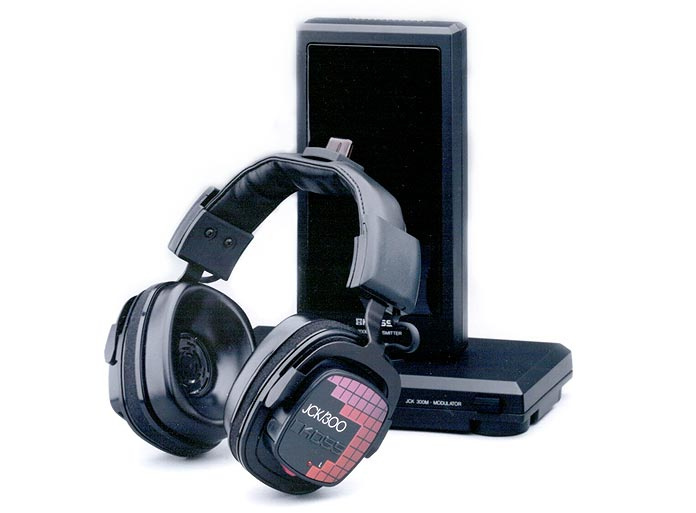
Thanks to timely decisions and bold anti-crisis initiatives of the founder, the company met the last decade of the 20th century as a full market leader. By the mid-90s, KOSS regained its former might.
Over time, John Koss retired and transferred the management of the company to his son, occasionally acting as a consultant. This is very similar to the behavior of Konosuke Matsushita, who, in his declining years, also retired, returning to the company only during crisis periods and acting as a business consultant. By the way, the decision on a lifetime warranty on a number of devices of the company also belongs to John Koss.
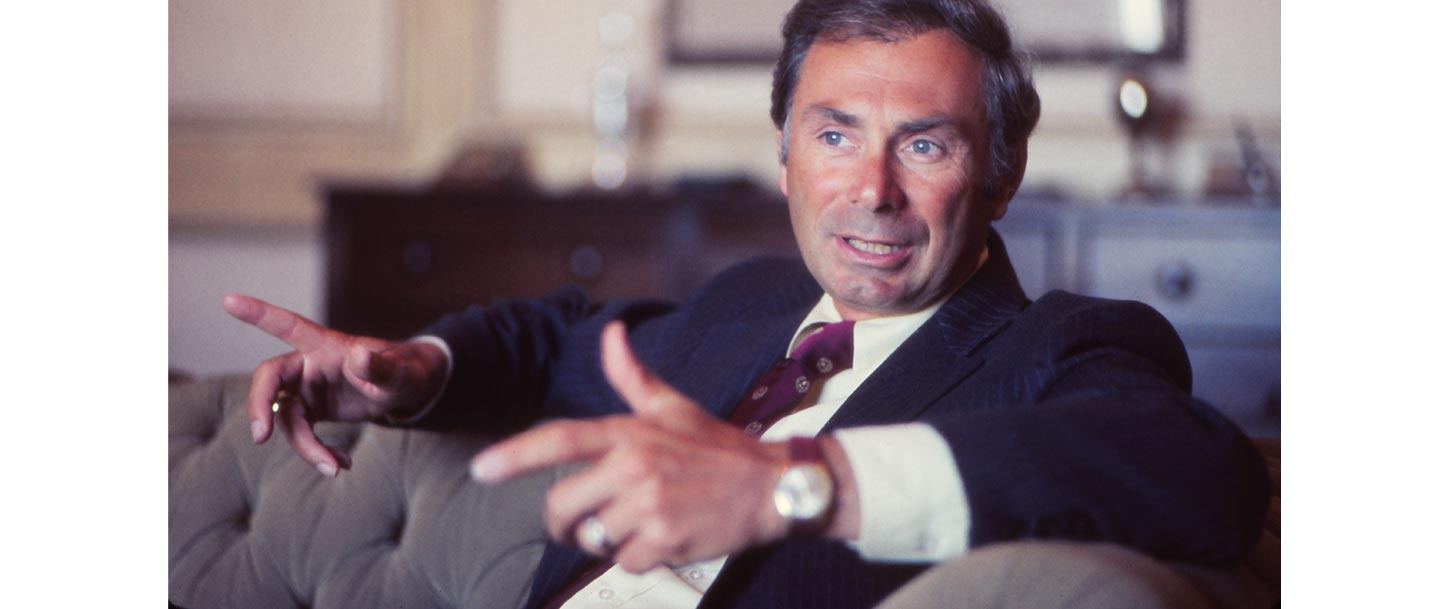
Back in 1979, John Koss, on the basis of merit in the industry, was included in the Audio Hall of Fame. In 2000, the names of John C. Coss and his partner Martin Lange were in the hall of fame for consumer electronics. As a merit, Koss was awarded with his contribution to the introduction of portable sound, the creation of the company and the development of a fundamentally new device based on military headphones from the 40s. In 2004, he was honored to be included in another hall of fame "Wisconsin Business Hall of Fame".
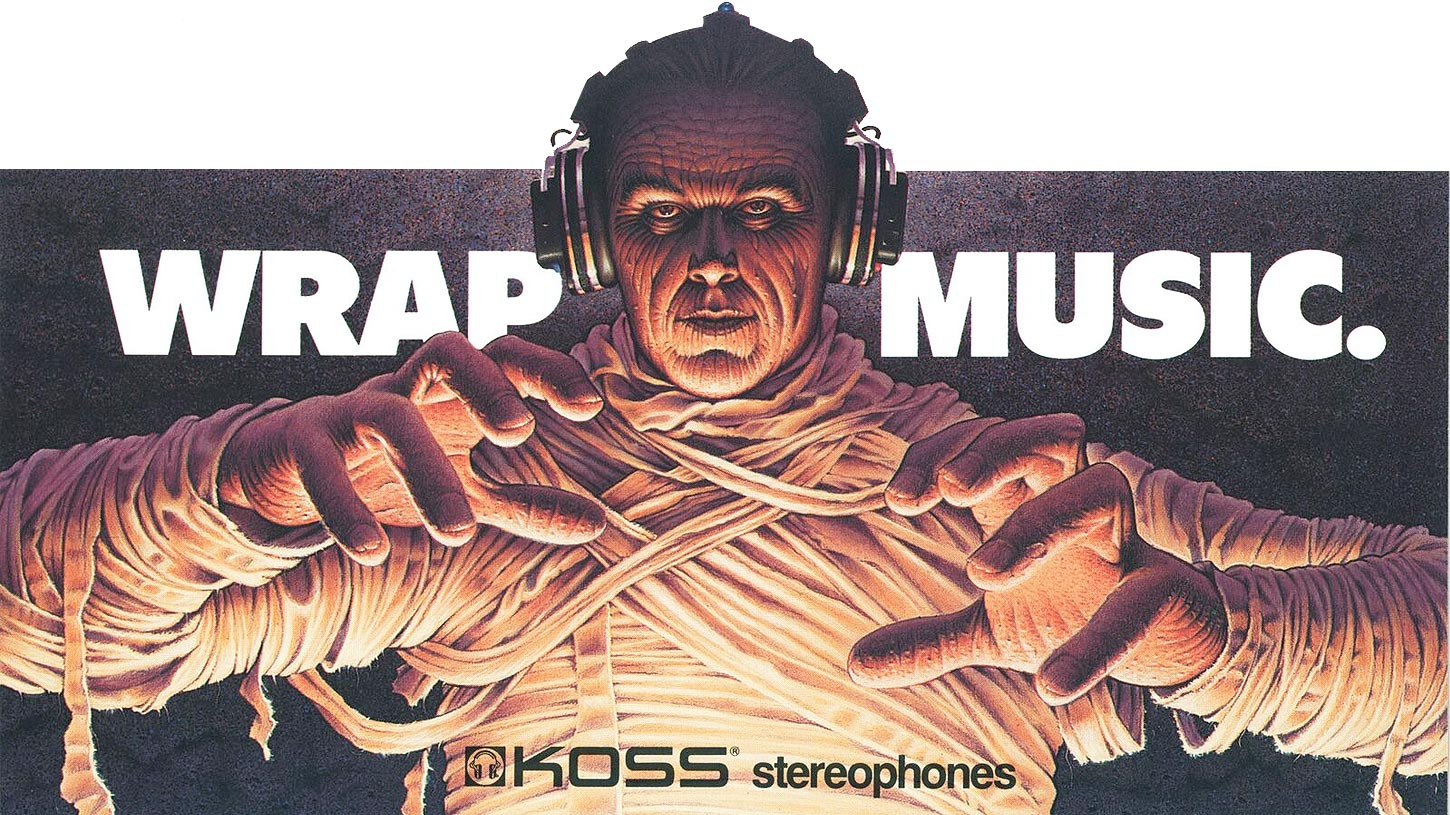
I believe that everyone who uses headphones for less than $ 100 and are satisfied with their quality, partly owe this to John Coss. He is the author of the principle: “Good headphones should be affordable,” which has been adopted by many manufacturers.
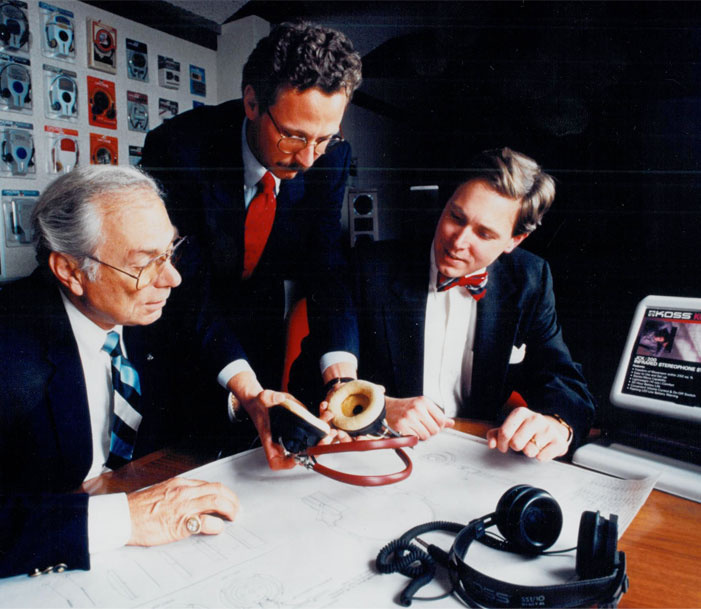
Michael Koss turned out to be the worthy son of his father and the best successor that the founder could find. All the fundamental principles on which the production, design and promotion of the company's products are built remain unshakable. It is possible that KOSS expects more than one golden decade.
Perhaps in the material a lot of subjective assessments. I have been a grateful user of KOSS products for many years and can be biased towards the company and its creator.

The main production principle of Koss is the creation of headphones at an affordable price with the highest possible quality. This concept has not changed since the day Koss debuted in the consumer electronics market. Over the past 50 years, Koss has been known to the world as a pioneer in creating massive portable audio, as well as one of the leading innovators and major players in the headphone market.
Newlywed sofa and win-win business
Relatively little is known about the childhood and youth of young John Koss. Unlike his Japanese and German colleagues, after gaining worldwide fame, he did not turn his personal life into a legend. Moreover, the businessman and innovator preferred not to give publicity to anything that was not directly related to his professional activity.
John Koss was born in Milwaukee, Wisconsin, in 1930. About the financial position of his family almost nothing is known. Most biographers agree that the Koss family belonged to the middle class, and, probably, the childhood of a businessman was rather difficult, as it was necessary during the great depression and its consequences. Neither the company’s website nor the available biographical sources report anything about the parents of a businessman.
The history of Cossa began in 1952, at a significant day for him - at the wedding. As a wedding gift, Kossu and his wife were presented with an envelope, with a relatively large amount for that time - $ 200 (today, taking inflation into account, this would have been $ 1,850). Kossov’s newly baked couple planned to purchase a sofa with this money, but later the couple decided that it would be too wasteful to exchange the “American dream” for furniture and put money into the business.
So in 1953, a small company JC Koss Hospital Television Rental Company was opened for wedding money, renting television sets to patients in clinics in Milwaukee. This business can not be called super-profitable, but it has repeatedly paid for the investments and gave Koss the opportunity to create an impressive financial reserve.

It can be noted that in the 50s his occupation was popular and almost win-win. Televisions were a comparative rarity, especially in small cities, and television broadcasting in the USA was regular. To get the opportunity to watch something in a box with a blue screen, instead of staying in a hospital bed, many people wanted. In the 1950s, several thousand such companies were opened in the United States, many of which existed until the early 1970s.
Low start
Perhaps, many initiatives in the field of audio electronics of the 40s - 60s can be called startups. Koss is no exception. Despite the fact that he already had a completely profitable business, he decides to risk the accumulated state. John was a man with nontrivial thinking, perhaps contemporaries considered him a dreamer. In the 50s, his ideas significantly outstripped the development of technology, and there was not enough knowledge and experience to create production. Everything changed in 1956, when Koss met a talented engineer Martin Lange.

Like Akio Morita, Koss had a dream about a mobile, compact device for listening to music, which he shared with a new acquaintance. The partners took up the development of a portable record player and decided to equip it with stereo headphones. During the development period, for the financial support of the young company, Koss and Lange produced simple and highly demanded testers for the repair of television sets, which allowed them to keep afloat.
As a basis, the engineer and businessman chose aviation headphones, which were substantially modified. The main innovation was the separation of channels. Already by 1958, the product was completely ready for commercial launch. Koss presented a portable LP player the same year at a technical exhibition in Wisconsin.

Contrary to the expectations of the creators, visitors of the exhibition almost did not interest the player, but the headphones made a real sensation. The main value of the product for users was the ability to isolate from the sound of people around the listener. No less impressive was the impression of the stereo effect in the headphones, which was also at that time something completely new.
The device "took off", which, to the surprise of developers, has repeatedly increased the company's revenues. Since then, the headphones have become the main activity of Koss. The brand within 2 years has gained world fame. For several months, the partners have started mass production of headphones. The first mass model Koss became the SP-3.

Later, with the light hand of The Billboard journalists, John Koss will be named the inventor of the stereo headset. The last statement is somewhat far from the truth, since at various times many professional stereo head phones appeared. For example, such as Eugen Bayer's headphones and Telefunken studio headphones (used in the 30s – 40s on German radio stations and recording studios). But it was Koss and Lange who made them a truly massive product.
The Beatles Age and the Cossa Golden Decade
By the mid-60s, lanky people with guitars began to conquer the tops of the music Olympus. At the forefront of this galaxy of insurgents of the first wave certainly went The Beatles. The album A hard day's night blew up the charts on both sides of the Atlantic. Beatlemania was probably the first global phenomenon of insanity in music.

The main target audience of the Liverpool Four was youth. Koss and Lange rightly reasoned that their product and The Beatles had only Central Asia. A co-branding plan was developed, according to which Koss headphones and players are produced with the symbols of the Liverpool team. Thus, an analogy of the type should have arisen in the mind of the Beetleman: “Lenon and Koss are twin brothers, we listen to Koss - we mean - the Beatles! We listen to the Beatles - we mean - Koss! ”

So there were headphones, which are known to us as "Bitlofony." The basis for creating a fashionable gadget was the serial model K-6.

Technically, these headphones are no different from the classic production model. Moreover, the design has hardly changed. The only innovations were modified packs with the symbols of the group, a new color and stickers with a photo of the team on the device itself.

The smiles of Paul, John, Ringo and George really helped the realization. The sales of the already popular K-6 were comparable to the sales of the first edition of The Beatles album “Let it be”. In fact, this model paid for the creation of several production units in Europe.
By 1967, the company's annual turnover exceeded $ 2,000,000 (the current equivalent of 17 million). The company did not owe its success exclusively to the Beatlophones. Over the next year, Koss could triple the turnover, which even for a monopolist can be considered an economic miracle. At that moment, John Koss and Martin Eugen were people who, better than anyone, knew how to make good headphones and what the market really wants from such a device. In the 60s, his position was almost unshakable.
John Koss was well aware that the new niche, practically occupied by his company in the market, is far from everything that Eugen and his other engineers are capable of. He decided to make his way into the professional segment. This led to the appearance of the legendary Koss PRO4AA studio headphones. This model has been appreciated by professionals, and is produced to this day.

In the late 60s, the company blew up the nascent High End segment, launching the first American electrostatic headphones. Thus, Koss became the only competitor of the Japanese company Stax.

It was in the sixties that experimental headphones were created, which revived the forgotten intra channel acoustic design. Until Koss, this principle was used only in the 19th century by Ernest Mercadier, Thomas Edison. At that time, the market was not ready to accept development, and the “gags” that are well known to us took root only by the beginning of the 70s in the sphere of professional concert use. The concept will shoot only in the 90s.
Lost race with Walkman and out of crisis
The inertia of the financial and technological explosion of Koss in the 60s allowed the company to exist comfortably during the next decade and conduct a number of promising strategic developments. In connection with this order, John Coss, tired of the endless series of decision-making, in the late 1970s, decided to retire and rest on the laurels of the main popularizer of headphones.
Management was transferred to the “effective” manager, James Dodson, which almost destroyed the giant company and the former industry leader. To the credit of Dodson, it should be noted that the direction of research and development was chosen quite correctly. From the mid-70s, the development of a portable cassette player was launched at Koss. The idea also belonged to John Cossa, but he did not engage in its implementation.

Despite the huge amount of funds that the company spent on the development of the device, Koss Box Music portable cassette player appeared only in 1982. Other things being equal with the Walkman that started three years earlier, the price of the device was higher than that of the SONY. The mass release of a model not interesting to the market has put the company on the verge of bankruptcy. On top of that, SONY used Sennheiser products, the main competitor of KOSS in the target headphone market, as Walkman headphones.

As often happens in a crisis, difficult period, the father of the founder, John Koss, returns to the leadership in order to save his brainchild. Failure with the "music box" cost much. Several enterprises in Europe were lost and, most importantly, the reputation of the indisputable monopolist in the industry, KOSS began to be forgotten. In addition, unlike Japanese colleagues, Koss did not shy away from downsizing. At the cost of impressive losses, John managed to keep the main production capacity. We needed an idea and a product that would allow us to regain lost positions in the market.
This idea was the KOSS Porta Pro . John Koss, Martin Eugen and a group of young designers managed to find a form factor that appealed to the market. They understood that the device that would save the company should differ significantly from everything that had been done before, while possessing qualities that the company’s products had valued in the past.

Koss made the difficult decision: to attack the market with a product that had nothing to do with what the company had done before. It was a serious risk, and he was justified. The headphones turned out to be unusual, hardly anything similar came out before and after the Porta Pro. Open type, surface acoustic design, low weight, high-quality sound and the price is lower than that of the vast majority of analogs.

Wireless headphones were developed for a narrower segment, and the signal was transmitted via infrared. The range was limited to the line of sight, but for the year 1989 - the rejection of the cable was a serious conceptual breakthrough. The development of KOSS was not the first, infrared headphones were produced before them, but it was the JCK-300 that were able to gain popularity due to the stability of the transmission. KOSS engineers were able to increase the power of the transmitting beam by 4 times, which favorably distinguished the model.

Thanks to timely decisions and bold anti-crisis initiatives of the founder, the company met the last decade of the 20th century as a full market leader. By the mid-90s, KOSS regained its former might.
As a conclusion
Over time, John Koss retired and transferred the management of the company to his son, occasionally acting as a consultant. This is very similar to the behavior of Konosuke Matsushita, who, in his declining years, also retired, returning to the company only during crisis periods and acting as a business consultant. By the way, the decision on a lifetime warranty on a number of devices of the company also belongs to John Koss.

Back in 1979, John Koss, on the basis of merit in the industry, was included in the Audio Hall of Fame. In 2000, the names of John C. Coss and his partner Martin Lange were in the hall of fame for consumer electronics. As a merit, Koss was awarded with his contribution to the introduction of portable sound, the creation of the company and the development of a fundamentally new device based on military headphones from the 40s. In 2004, he was honored to be included in another hall of fame "Wisconsin Business Hall of Fame".

I believe that everyone who uses headphones for less than $ 100 and are satisfied with their quality, partly owe this to John Coss. He is the author of the principle: “Good headphones should be affordable,” which has been adopted by many manufacturers.

Michael Koss turned out to be the worthy son of his father and the best successor that the founder could find. All the fundamental principles on which the production, design and promotion of the company's products are built remain unshakable. It is possible that KOSS expects more than one golden decade.
Perhaps in the material a lot of subjective assessments. I have been a grateful user of KOSS products for many years and can be biased towards the company and its creator.
All Articles